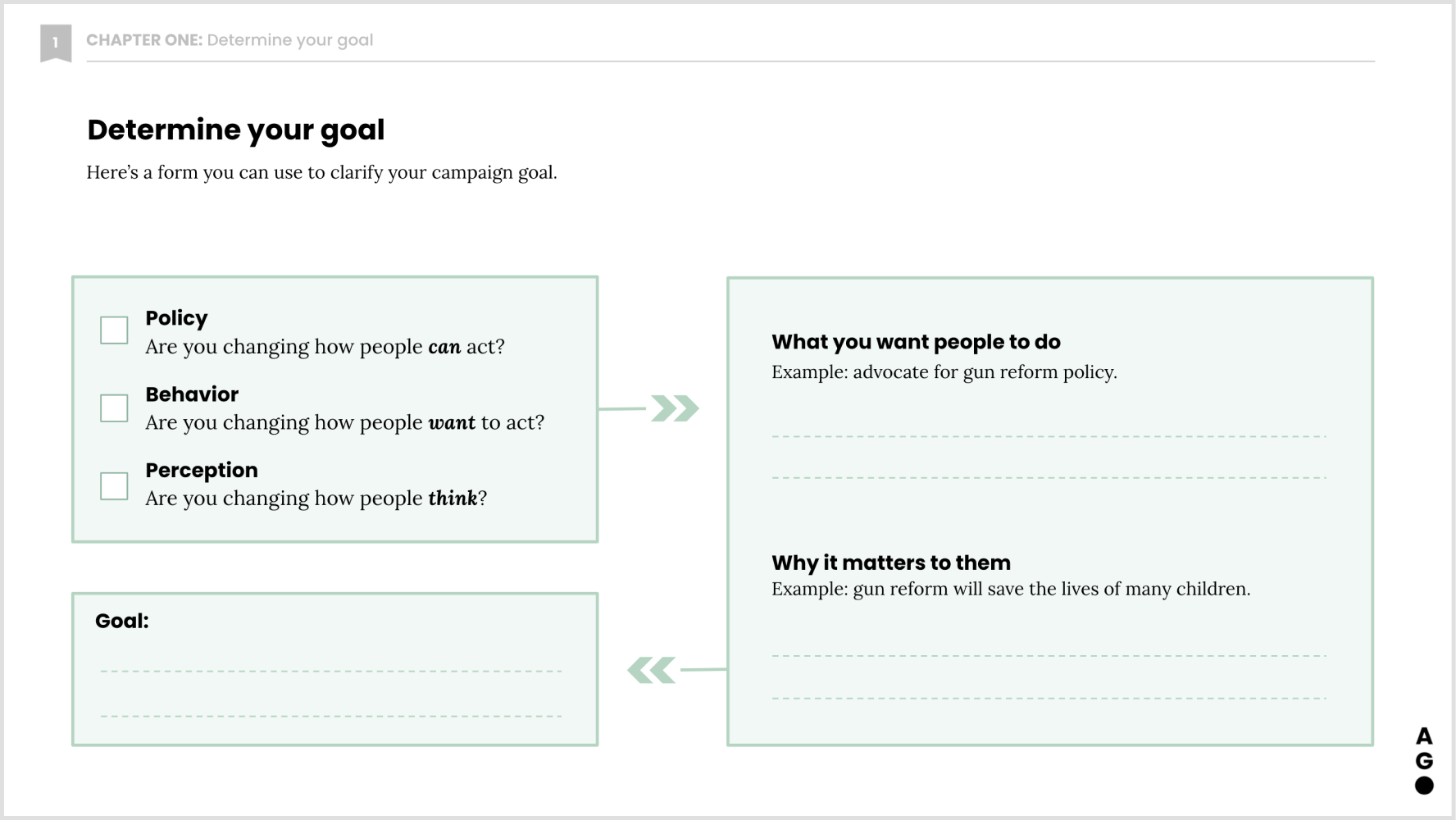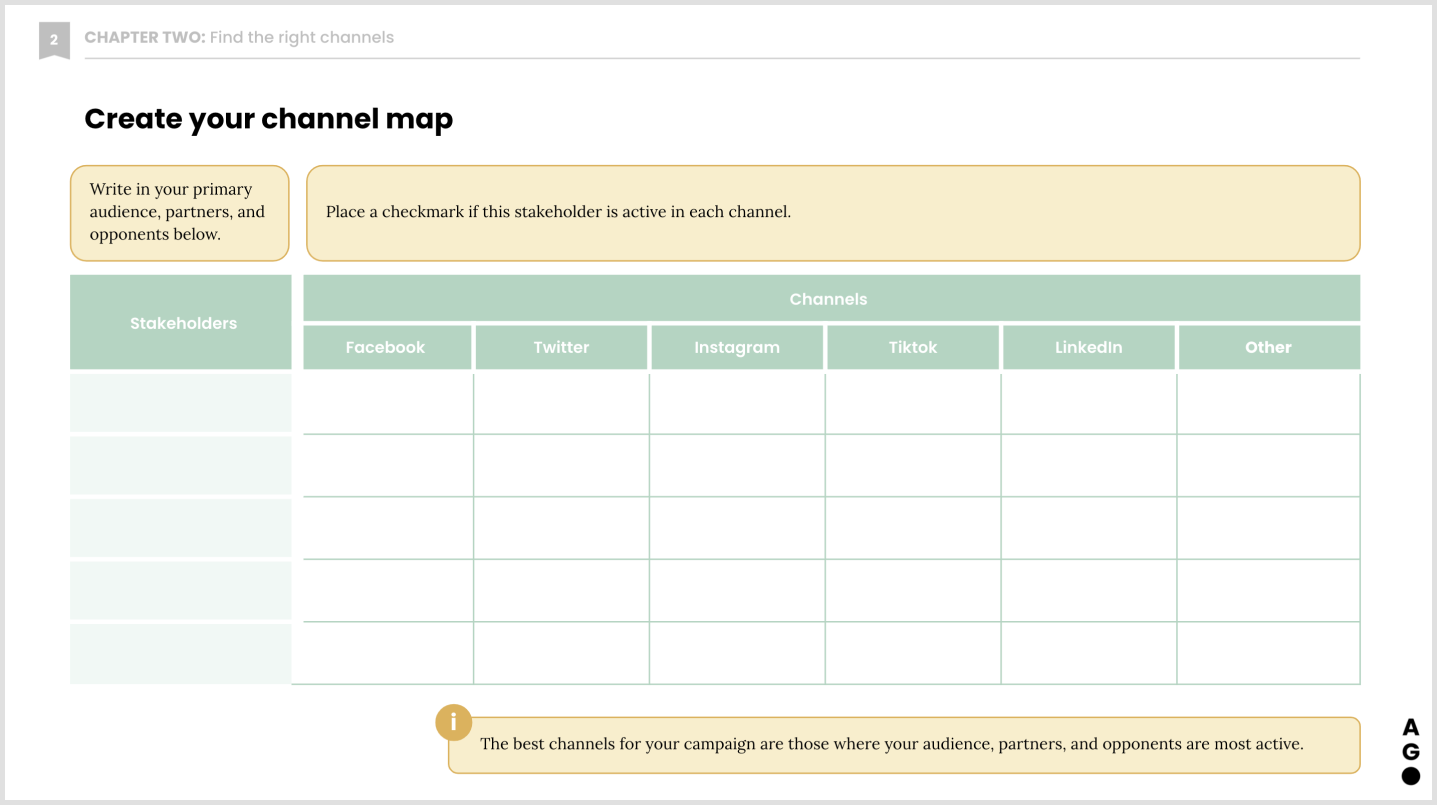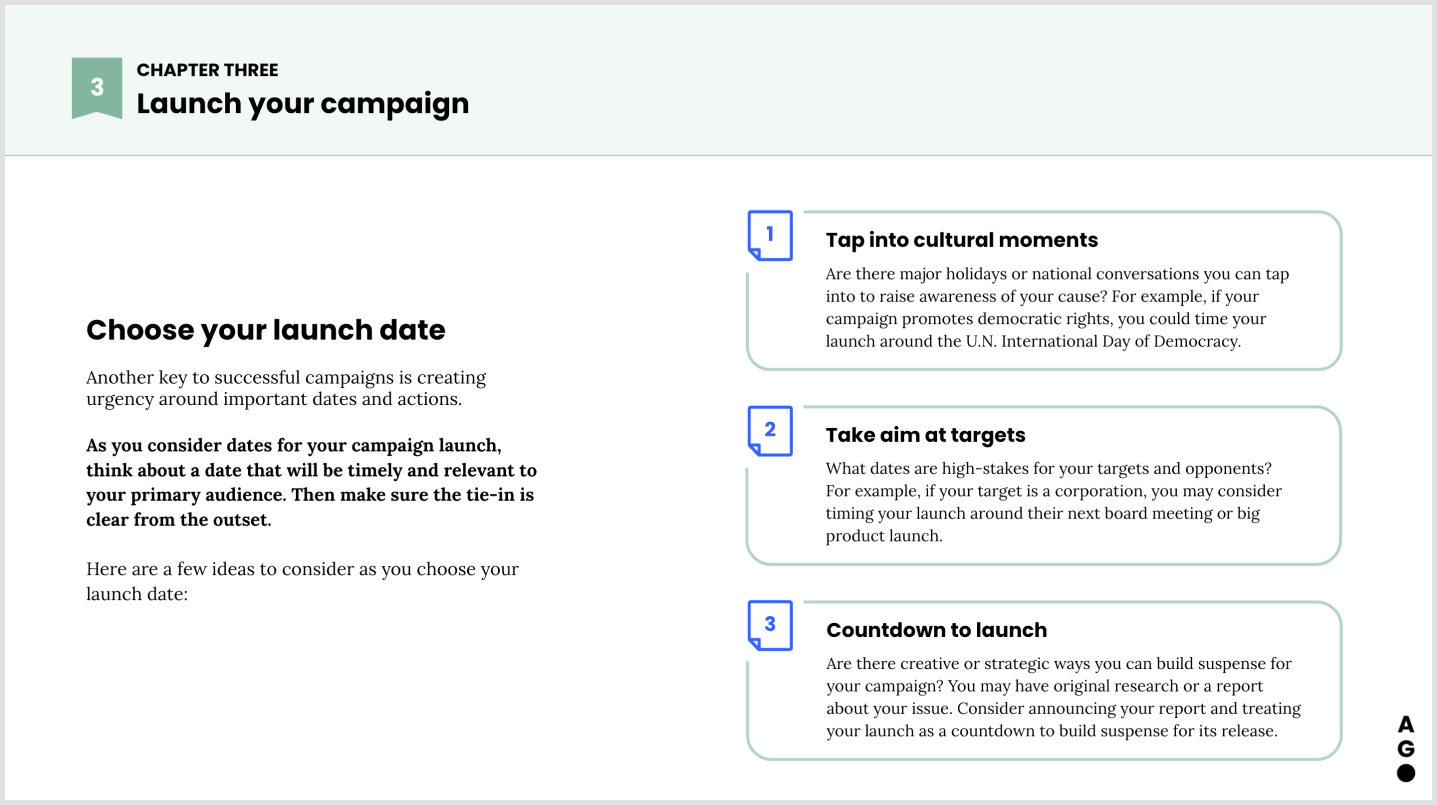How to run a successful nonprofit campaign
Strategize, plan, and launch a message that lands.

A successful advocacy campaign is a powerful opportunity
It can advance your organization’s mission, whether you want to shift policy, educate people on a particular issue, or push a community to change behaviors.
Unfortunately, campaign strategy and planning can feel arduous and even overwhelming. You might have a cause in mind, but you’re not sure how to get it off the ground. Or maybe you don’t have a large staff to execute all the moving parts. There are digital tools to help with publishing and organization, but which ones should you choose?
At AGO, we work closely with nonprofits that don’t have a lot of creative resources or marketing budget, but have big goals for making change. Maybe your organization is in a similar position. We want to share our knowledge and strategic experience with you.
So—digital drumroll—we created a campaign planning 101 guide.
Unfortunately, campaign strategy and planning can feel arduous and even overwhelming. You might have a cause in mind, but you’re not sure how to get it off the ground. Or maybe you don’t have a large staff to execute all the moving parts. There are digital tools to help with publishing and organization, but which ones should you choose?
At AGO, we work closely with nonprofits that don’t have a lot of creative resources or marketing budget, but have big goals for making change. Maybe your organization is in a similar position. We want to share our knowledge and strategic experience with you.
So—digital drumroll—we created a campaign planning 101 guide.
The campaign planning 101 guide
To help you think through the process, we broke down campaign planning for nonprofits into three chapters:
In this article, we’ll introduce the principles of the first chapter, and give you a sneak peek into the rest of it.
Curious about the full guide? We’ve got you. We’re including a fully downloadable, interactive resource that goes deeper into the theory of crafting campaigns and serves as a worksheet. This way you can hit the ground running, and start planning your own campaign right now.
- Strategize
- Plan
- Launch
In this article, we’ll introduce the principles of the first chapter, and give you a sneak peek into the rest of it.
Curious about the full guide? We’ve got you. We’re including a fully downloadable, interactive resource that goes deeper into the theory of crafting campaigns and serves as a worksheet. This way you can hit the ground running, and start planning your own campaign right now.

1. Determine your goal
An advocacy campaign is built to motivate people to take action for a cause—one they might not even know or care about yet. Create a focused goal to keep your planning on track and your audience engaged.
Your goal should be inspirational and attainable. You want people to believe that change is possible now, and that you know how to make it happen. Use the exercise below to think through your campaign goal.
Your goal should be inspirational and attainable. You want people to believe that change is possible now, and that you know how to make it happen. Use the exercise below to think through your campaign goal.

2. Understand your stakeholders
A stakeholder is anyone who has a stake in your fight, whether they’re for or against your cause. If this was a drama, stakeholders would be your actors.
Mapping these forces will bring your entire campaign together, so you can understand who the stakeholders are, how they relate to one another, and what their roles are in your cause.
Mapping these forces will bring your entire campaign together, so you can understand who the stakeholders are, how they relate to one another, and what their roles are in your cause.
3. Define your audience
Your primary audience is the beating heart of your campaign. They’re the people most likely to care about your cause—and the ones you must compel to take action.
You can have multiple audiences and they might change, but determining who these people are is vital to understanding what resonates with them.
You can have multiple audiences and they might change, but determining who these people are is vital to understanding what resonates with them.
4. Identify your theory of change
Your theory of change is a strategic statement that explains how you’re going to make change happen. For example, generations ago, labor unions discovered theirs: put enough financial pressure on a company’s bottom line and the company will give workers a fair contract.
A simple, strong statement can unify your team and partners and keep you aligned along every step of a campaign. Refer back to it regularly and make sure every aspect of your campaign remains true to its direction.
A simple, strong statement can unify your team and partners and keep you aligned along every step of a campaign. Refer back to it regularly and make sure every aspect of your campaign remains true to its direction.
5. Determine your needs and partners
The core needs for any campaign are content, distribution, and ad budget. Think about where you already have an advantage, and where you may need additional support.
To find more resources, get specific about potential partners. The worksheet below is an example of how you could analyze your partners’ key strengths and potential impact.
To find more resources, get specific about potential partners. The worksheet below is an example of how you could analyze your partners’ key strengths and potential impact.

Your next steps
Our full campaign planning guide dives deeper into strategy and comes with exercises to help you get into the nitty gritty. It also includes principles and tools for taking your campaign through the planning and launch phases.
The guide answers some common nonprofit client questions, such as:
We walk you through building an editorial calendar, content creation, and tools for organizing your team. You’ll also get details on launching a campaign, growing your audience, and keeping up momentum.
The guide answers some common nonprofit client questions, such as:
- How do I talk to my audience?
- How do I build momentum?
- How do I grow social media channels?
We walk you through building an editorial calendar, content creation, and tools for organizing your team. You’ll also get details on launching a campaign, growing your audience, and keeping up momentum.


What’s your next campaign?
We know that campaigning is hard...and we know that you can do it. Use these strategic principles to develop a clear plan and spark your creativity, whatever your cause, message, or goal.
And tell us about it! We’d love to hear from you about which tactics work, and anything we missed. Or tell us about a powerful campaign that resonated with you.
Download the campaign planning 101 guide
→
And tell us about it! We’d love to hear from you about which tactics work, and anything we missed. Or tell us about a powerful campaign that resonated with you.
Sign up for our lightweight newsletter
Insights and resources for important work